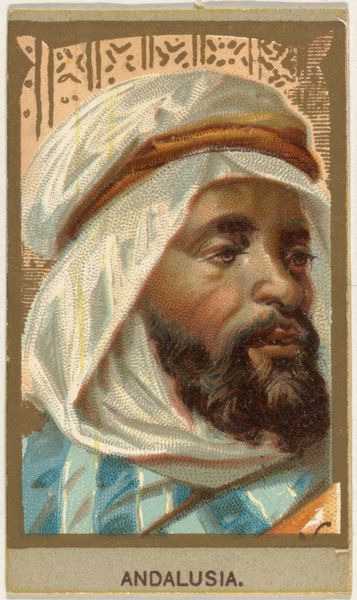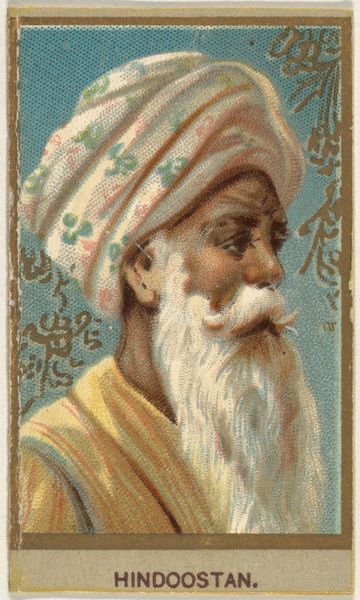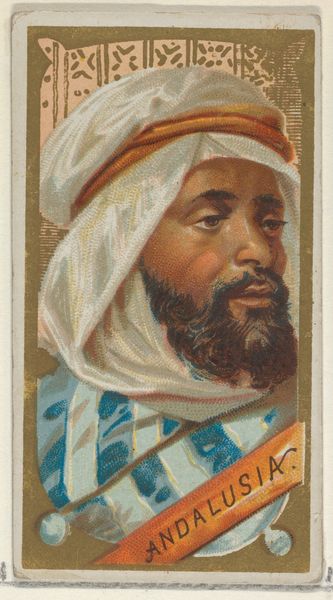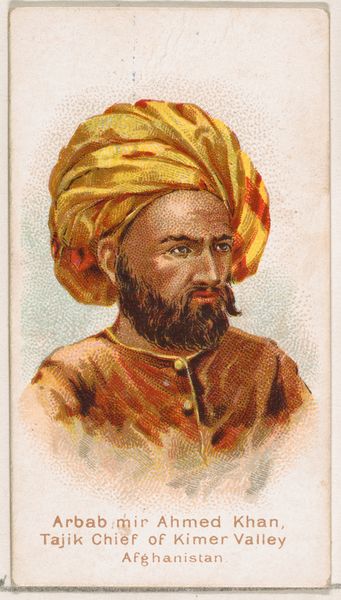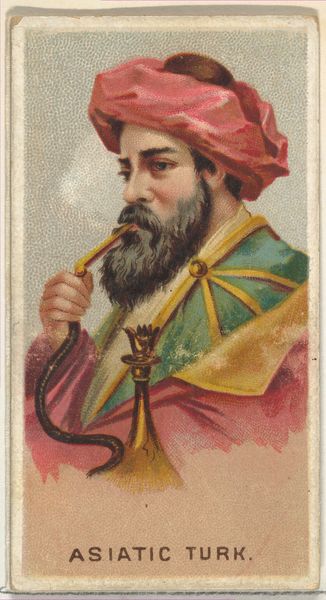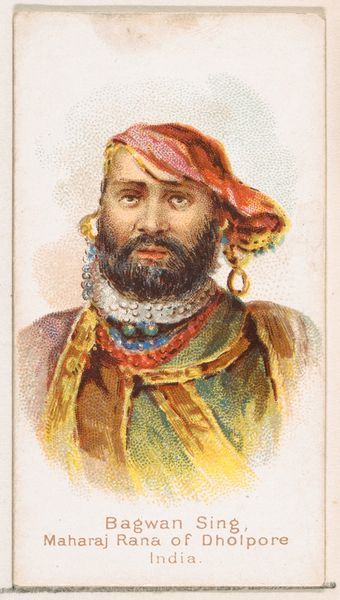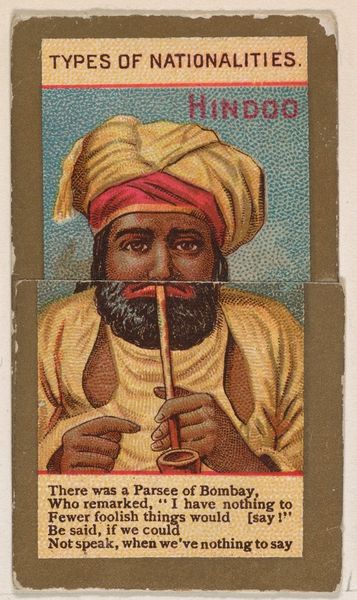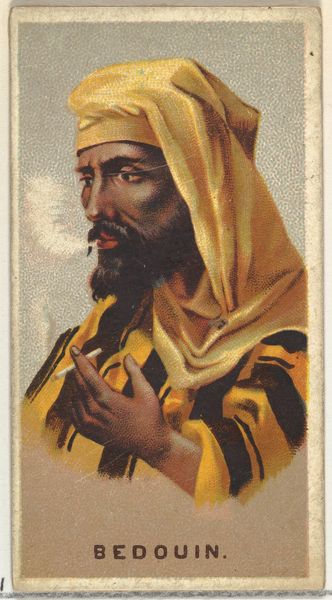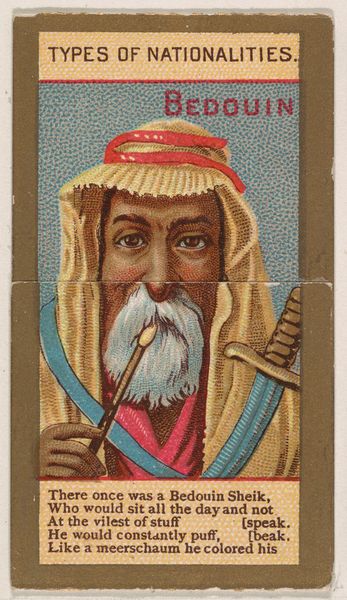
Sultan of Morocco, from World's Sovereigns series (N34) for Allen & Ginter Cigarettes 1889
0:00
0:00
drawing, lithograph, print
#
portrait
#
drawing
#
lithograph
# print
#
impressionism
#
oil painting
#
orientalism
#
academic-art
#
portrait art
#
profile
Dimensions: Sheet: 2 3/4 x 1 1/2 in. (7 x 3.8 cm)
Copyright: Public Domain
Curator: Looking at this tiny lithograph, there's something melancholic about the Sultan's profile. A hint of longing, perhaps? Editor: It's interesting how that sense of melancholy clashes with the bright colors and crisp lines, and the very means of its production. This is "Sultan of Morocco," from the "World's Sovereigns" series of trade cards by Allen & Ginter, dating to 1889. Imagine, this was essentially advertising, inserted into packs of cigarettes! Curator: Cigarettes! Suddenly, that melancholic air I sensed makes perfect sense. Smoke and mirrors, puffery, an exotic figure reduced to a collectible trinket. There is such a fleeting beauty to him in this lithograph print. Editor: Exactly. And the materials used – the inks, the paper stock, the very industrial process – were geared toward mass consumption, and of course profitability. It’s fascinating to consider the original audience, inhaling tobacco while gazing upon the so-called "World's Sovereigns"– it all reeks of empire, consumption, and othering. Curator: Othering, yes, that's powerful. The very clean lines of the lithograph itself flattens him, and strips away any personal history. He's repackaged into a consumable icon. Editor: Right. But I also want to point out, that despite the context and mode of production, there is some talent displayed here, look at the detail in his beard, for instance, and the attempt to replicate the folds of fabric. There's still artistry. This was a designed object meant to entice. What story did they want these small images to convey? Curator: The story they *thought* they were telling, perhaps, versus what was really going on beneath the surface. Isn't that the joy of interpreting art across time? We hold this miniature artifact of trade, empire, and longing, so small in the palm, and yet, it reflects so much about a complex historical moment. Editor: Indeed. It's a potent reminder to always consider the hidden stories behind the objects we encounter, who makes them, how they're distributed, and who ultimately consumes them.
Comments
No comments
Be the first to comment and join the conversation on the ultimate creative platform.


